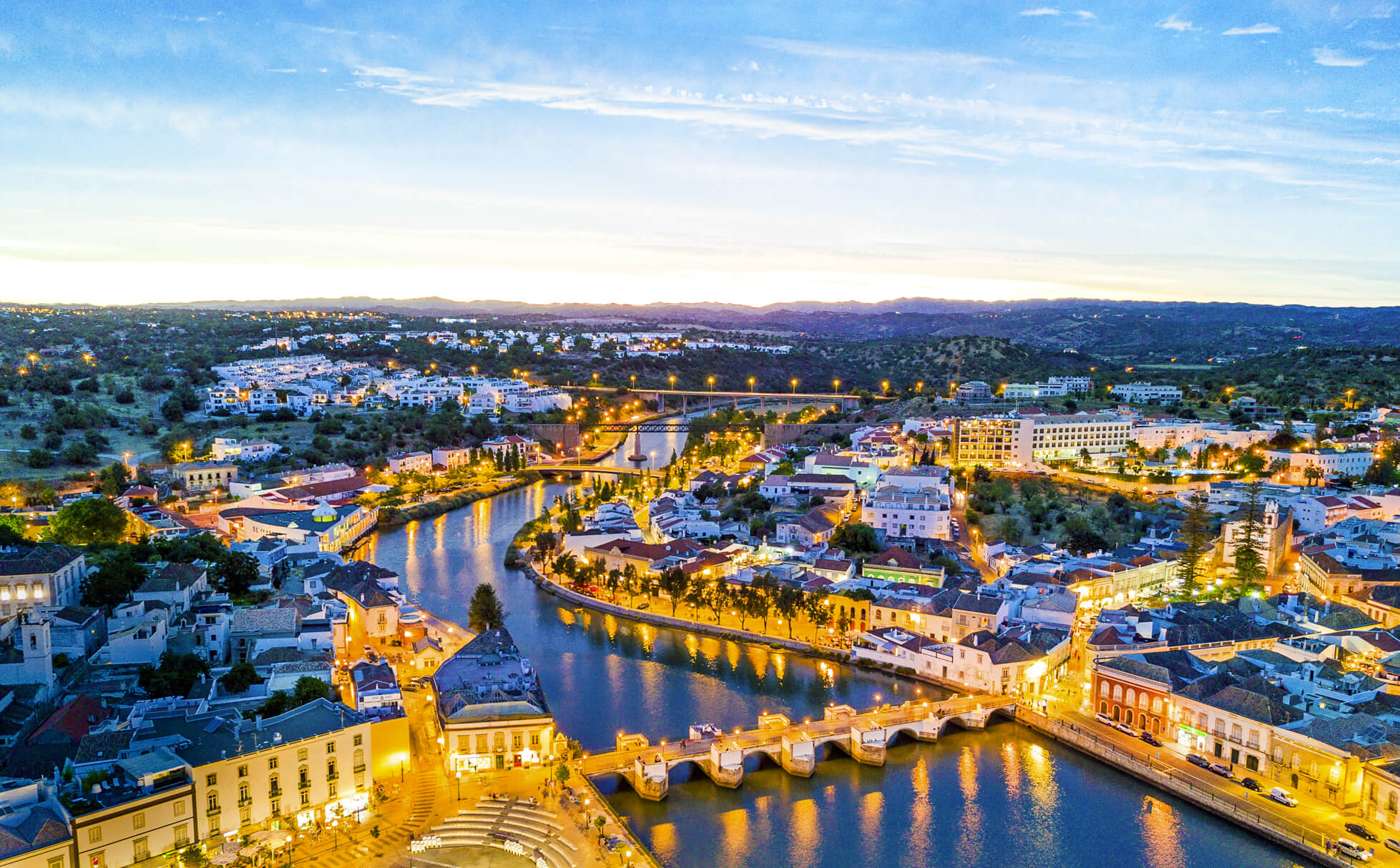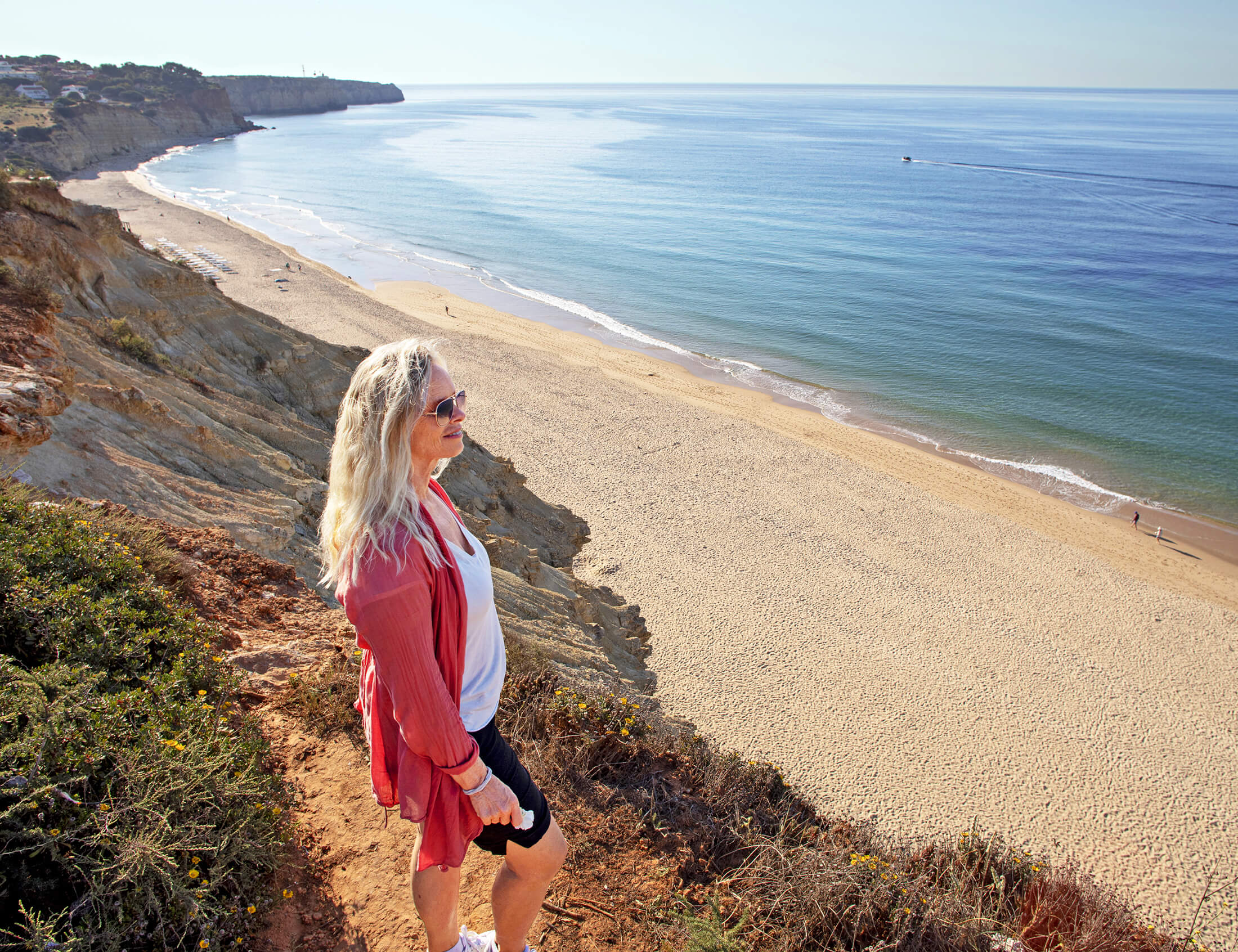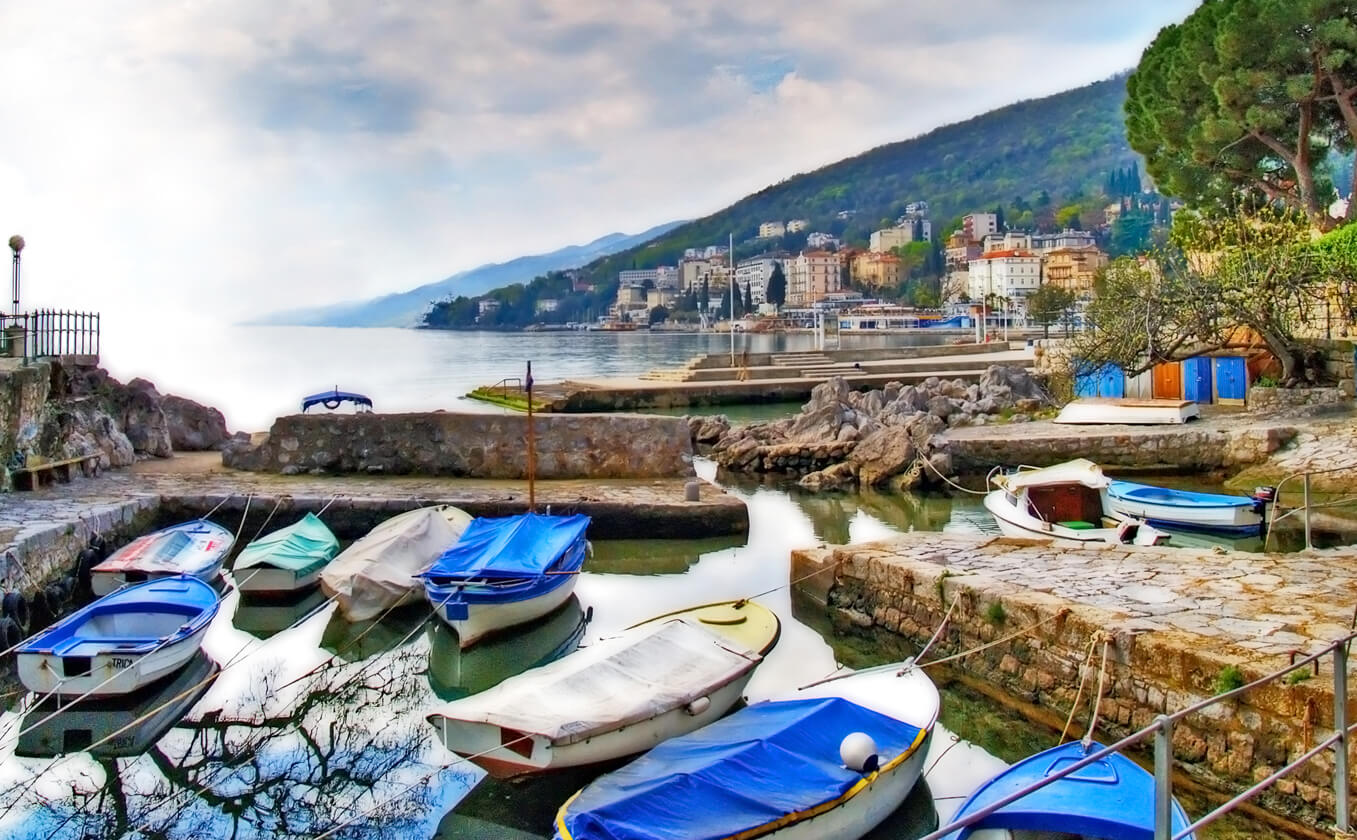BONUS CONTENT/FEATURE STORY
Less-Traveled Europe
Winter trips across the Atlantic often lead you to holiday markets, skiing and taking in the northern lights on the continent’s upper reaches. But travelers looking for warmer weather and uncrowded escapes can find those too. Be sure to pack a sweater, though; in southern Europe, even mild climates can have a chilly day.
By Rachel Walker

The Gilão River flows through Tavira along Portugal’s rustic Algarve Coast.
TAVIRA, PORTUGAL
Beauty by the River
THE ALGARVE Coast in southern Portugal is known for its rugged coastline where massive cliffs drop into the warm Atlantic and white sandy beaches slip into aquamarine waters. The riverfront town of Tavira, about 16 miles from the Spanish border, is the ideal base camp for a winter vacation to this area because of its historical sites, gorgeous beaches and strategic location, says Betsy Ball, 60, cofounder and partner of Euro Travel Coach. “Plus, it’s one of the prettiest towns in the Algarve.” A critical port in ancient times, Tavira is renowned for Moorish architecture and cultural sites, including the still-intact, seven-arch Roman Bridge that spans the Gilão River. The small city also boasts more than 30 churches, castle ruins, cobblestone streets and a picturesque old town. Hiking trails lead through forests and coastal routes. “The winter weather is really comfortable for hiking,” Ball says.
Beyond Tavira, travelers will discover small beachside towns, islands accessible by ferries and superlative seafood, Ball notes. Because the majority of the Algarve’s visitors come in the summer, winter travelers will have fewer hotel and restaurant options, but those that are open year-round are frequented by locals. “Portugal is absolutely wonderful for hospitality,” Ball says. “The people are unique and friendly, and they love to share their culture.”

Soft sandy beaches on the Atlantic

JEREZ DE LA FRONTERA, SPAIN
The Spot for Sherry
ALSO KNOWN simply as Jerez, this is Spain’s sherry capital and a foodie’s delight. “I didn’t like sherry until I visited this area, and I left a convert,” Ball says. Sherry is a Spanish fortified white wine, and it hails from this area of Spain (“sherry” derives from the English rendition of “Jerez”). Travelers can visit production sites and partake in sherry tastings. Jerez is equally famous for its thriving flamenco tradition, centered on traditional Spanish music and dance; the town’s winter flamenco festival offers two weeks of performances and classes. Jerez is also home to the Royal Andalusian School of Equestrian Art Foundation, a world-renowned horsemanship center.
Beyond the city’s borders is Sierra de Grazalema Natural Park, known for its expansive mountain views and abundant hiking trails. Venture farther to visit several other “white hill towns,” named for the white painted buildings designed to stay cooler in the scorching summer. “This is the part of the Andalusia region where you can immerse yourself in the culture and visit places with more of an authentic, local feel,” Ball says. “You could spend months here and still not see it all.”


Bountiful food at an open market in Uzès
UZÈS, FRANCE
First-Century Charm
SOUTHERN FRANCE is awash in olive groves, lavender fields and medieval towns. Add in the mild Mediterranean climate, and Provence—the coastal southeast region of France—is an ideal warm-weather destination. Uzès is a charming town northwest of Marseille but without that city’s hustle or the crowds. “The French do food and wine so well, and Uzès is no exception,” Ball says. Artisanal markets feature fresh vegetable and fruit sellers, cheesemongers and more. Narrow, cobblestone streets and winding roads date back to the Roman occupation in the first century. Renowned for its preserved ancient monuments, architecture and art, Uzès was also the origination point of the Eure Valley’s 52-kilometer Roman aqueduct that ferried water from Uzès to Nîmes; visitors can marvel at the engineering prowess at the Pont du Gard, aqueduct ruins that transferred water for five centuries. While there, explore other nearby towns, including Nîmes, famous for its Roman amphitheater. Adventurous travelers might opt to cycle, as the picturesque roads are conducive to cycling year-round. And you need not worry about being fit enough to pedal. “Electric bikes are quite popular there,” Ball says, “which make the travel and the hills relatively easy.”

A nearly intact Roman aqueduct

Boats line a pier in Opatija along the Adriatic Sea.
OPATIJA, CROATIA
A Playground of the Past
THIS TOWN ON the Adriatic Sea has drawn Europeans for its healthy air and waters for more than a century, says Wanda S. Radetti, founder of visitcroatia.com. “It was the playground for Europe before the French Riviera became so popular.” Stroll the Lungomare, a roughly 7-mile promenade connecting Opatija with other coastal fishing villages. Completed in 1911, the Lungomare represents Opatija’s renown as a late-19th-century retreat as it traverses lush groves of holm oaks and laurel. Throughout the year, the oils from magnolia and laurel trees perfume the air, says Radetti. Croatian pastry shops abound, and in the winter, oysters are a local specialty. In addition to the natural and man-made beauty, winter visitors to Opatija—and Croatia in general—will be astonished by the light reflecting off the water and cliffs. “We call it ‘illumination,’ and it is absolutely beautiful,” Radetti says. Although Croatia has seen an uptick in tourism in recent years, the numbers still lag behind other European destinations, which means that winter visitors will have ample opportunity to experience authentic Croatian hospitality.

Before Traveling to Europe ...
→ Complete your passport renewal early. The rule of thumb is to renew if it’s set to expire less than six months after the return date of your trip, according to travel agents Mike Salvadore and Connie Antinopoulos. Allow about three months for the renewal process. For an additional $60, you can choose expedited service; that’ll trim about a month.
→ Apply for a travel authorization. Starting in 2024, this will be required for Americans traveling to Europe. Tourists can apply for the $8 authorization online through the European Travel Information and Authorization System (ETIAS). Authorization is valid for up to three years.
→ Get your cards ready. If you haven’t yet, upgrade your credit cards so you can pay via tapping; much of Europe has embraced cashless, no-touch transactions. When using a card, always pay in the local currency; that will get you the most favorable exchange rate. Do carry some euros for smaller transactions, like at street markets.
→ English is widely spoken in Europe, but you might want to download a translation app on your phone just in case. Practice using it before traveling so that you feel comfortable using it on the go. —Julie Goldenberg